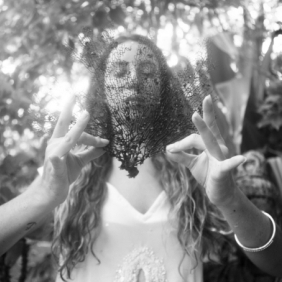We use cookies to optimise our website functionality and give you the best experience possible. Please, accept our Terms and Conditions. ACCEPT
Although there are only three doshas, an individual constitution is as unique as are our fingerprints.
Whenever we are able to find out something new about ourselves, we become particularly interested in learning. This rule is definitely applicable every time we start speaking of an individual constitution. The working of Tridosha on our mind and body is definitely the most liked part of lectures, because it is a practical knowledge, which we can immediately use in our day to day life.
My niece, Kristina, and her friend Pavel are good example of this. They came to my lecture for the first time, when they were twelve years old. After the lecture was over, we all went to have a walk around the old quarters of Prague. Kristina and Pavel were completely immersed in examining people: “Look at that skinny guy munching a roll while running for the tram! A typical Vata!” Kristina pointed out to Pavel. “Yeah, that’s right.” Pavel confirmed. Then he lowered his voice cautiously; “That ginger haired man over there is a typical Pitta, don’t you think?” Their new game lasted for almost the whole afternoon. Eventually, Pavel turned to me and commented “We could come across Vatas and Pittas around here and there is no Kapha anywhere, how come?”
The five basic elements - ether, air, fire, water and earth - express themselves in the human body as three biophysical principles, which we call tridosha. Vata is formed by the space and air and control all movement in the body. Fire and water form Pitta, which governs metabolism, transformation of energy and bodily temperature. Out of water and earth arises Kapha, which controls bodily structure and fluid management of the body. Through the mechanism of three doshas the human body is connected with a vast spectrum of cosmic energies. That is how we become part of the eternal universal dance.
Although there are only three doshas, an individual constitution is as unique as are our fingerprints. Every person is a combination of these three doshas. The proportion, in which they come, is different in each individual, and therefore every one of us has a unique physical appearance, behaviour, tendencies and emotional reactions. Our constitution is determined by our metabolic tendencies. The way our body and mind digest, gets reflected in our physical and psychological traits.
Every person is a combination of these three doshas. The proportion, in which they come, is different in each individual, and therefore every one of us has a unique physical appearance, behaviour, tendencies and emotional reactions.
Because in most people we find two ‘doshas predominant, Ayurveda talks about seven basic types. They are ‘Vata Pitta’, ‘Pitta Vata’, ‘Vata Kapha’, ‘Kapha Vata’, ‘Pitta Kapha’, ‘Kapha Pitta’, and ‘Vata Pitta Kapha’. The last combination where all three doshas are in harmony is very rare. Only such exceptional beings as Gautama Buddha, Jesus of Nazareth entered this world endowed with a perfectly balanced constitution.
The inborn constitution is termed ‘Prakruti’, which means ‘the entire expressed universe.’ Ayurvedic Rishis used the word Prakruti, because they understood the human being to be a micro cosmos. The constitution of a human being entering this world is truly his or her own personal universe. The energies ruling this micro cosmos are the same as the forces ruling the Universe. Prakruti includes all our physical traits, mental characteristics and emotional inclinations.
The interplay of the doshas gives us either health or illness. If the communication between the doshas is harmonious the bodily functions support each other. If the dosha’s functioning is disturbed, it results in various imbalances in the body. Let’s have a glance at how and why this happens, but first let us look at the nutrition of our body.
The second important area is our mind and thinking:
—
Read next chapter: ESSAYS ON AYURVEDA 17 >>

Titled as “Roving Ambassador of Ayurveda”, belongs to the first generation of Ayurvedic practitioners and teachers who have pioneered the way for Ayurveda's recognition as a mainstream system of medicine.

Born and raised in Paris, she has always been looking at the horizon. The city that nourished her, it was her trampoline for courageous free flight around this planet. It’s inspiring to keep up with her.